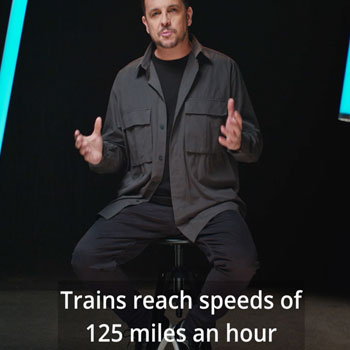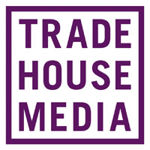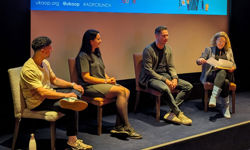
In the digital age, where information is readily available at our fingertips and social media algorithms control what we see, it can be easy to overlook the value and importance of newspaper and newsbrand advertising. However, there is still a strong case to be made for including newspaper advertising as part of a comprehensive marketing strategy.
First and foremost, newspaper advertising can reach a targeted and engaged audience. Many people continue to rely on their local newspaper for accurate news and are more likely to pay attention to the ads that appear alongside that content. This can be particularly effective for businesses looking to reach a specific demographic or geographic area.
Additionally, newspaper advertising allows businesses to effectively showcase their products and services in a more in-depth and visual way than what is possible on social media platforms. In contrast to social media ads, which can easily be scrolled past, newspaper ads often have more space and design elements to capture the reader’s attention and effectively convey the message.
Newspaper advertising also offers the added bonus of credibility and trustworthiness. When a business places an ad in a newspaper, it signals to the reader that the business is established and invested in the community. This can be especially important for small, locally-owned businesses looking to differentiate themselves from larger, faceless corporations.
Of course, it is important for businesses to consider their target audience and the most effective ways to reach them. However, in an age where we are constantly bombarded with digital ads and distractions, newspaper advertising can be a refreshing and effective way to reach a targeted and engaged audience.
Newsbrands are not as commonly included on media plans as they once were by marketers, or their c-suite peers, however there is good evidence to suggest that the distraction of new media is leaving space and opportunity for the brands that still consider newsbrands, to gain greater ground. One place to see such gains is in the Newsworks Awards, which celebrate and award brilliant advertising within newsbrands. Having had the pleasure to judge this annual award only a couple of months ago, I thought it would be valuable to share the insights from some of the best entries that others may wish to learn from.
1. Physical experiences overpower digital in memory encoding
While most campaigns even across newsbrands are now digital. There are some things you simply couldn’t replicate digitally that the physical form of the newspaper does effortlessly. There was no better example here than the winning campaign for RNIB, the UK’s leading sight loss charity. The charity is leading the creation of a truly accessible world for blind and partially sighted people, and their brief to their agencies was to put fully-sighted readers in the shoes of someone with visual impairment. Christmas was identified as an isolating time for children with vision impairment, who too often don’t get to experience all the magic in the same way as their friends. RNIB’s Letter from Santa scheme, made them feel truly included in the magic of Christmas by sending them letters in accessible formats.
The campaign aims were to raise funds to support the 14,500 young children in the UK with vision impairment. Giving them the opportunity to get a festive letter from Santa, in an accessible format such as braille or audio. The agency’s solution was to make the letters in braille more accessible than ever before and to raise awareness and empathy for those with visual impairment, so they did this by wrapping the Metro newspaper and creating the UK’s first ever braille front cover. Fully sighted readers could of course translate the braille through a simple QR code inside the cover. While just 15k copies were printed, the campaign made a seismic impact, reaching 24% of visually impaired children with a letter from Santa, and breaking their donation targets by 117%, as well as shifting brand metrics in the right direction with belief in the cause jumping up by 10% and brand reputation increasing by a third above its target.
2. Puts your brand closer to the pulse

When TSB launched their Fraud Refund Guarantee product in 2019, which was a market smashing refund against fraud service, they needed a trustworthy medium to deliver this very important and surprising low interest (until it happens to you) message.
The agency developed five key elements of the strategy; Raise awareness in the media, as well as with government and opinion formers; Create customer advocacy through owned channels; Deliver communications through conversion journey; Create colleague advocacy; Provide right time, right place messaging to build relevance and differentiation.
The role of newsbrands became to provide opportunities to speak to an audience who are thinking of fraud, by targeting those consuming content on that very subject; creating greater opportunity to stand out and drive attention amongst a hard-to-engage audience. With fraud cases peeking around a few key moments, holiday scams in June, student scams in September and purchase fraud around Black Friday, they used newsbrands to be timely around these occasions of peak coverage. By scanning and categorising articles using advanced natural language processing and semantic technology, they were able to systematically identify relevant articles to target and serve a TSB Fraud Refund Guarantee message alongside editorial to encourage linkage. Furthermore, the digital side of newsbrands was able to retarget readers who had shown engagement in reading the article.
3. Innovation through flexibility

While the list of insights is plenty, the final point to pick out here was the unrivalled ability for newsbrands to be flexible in working with a brand and a brief to create new creative formats and experiences that had never been seen before. This flexibility of the publisher, editorial and advertiser working more closely to appreciate the importance of creating ads that worked for all parties, and the readers, is unique to newsbrands.
Nothing was more demonstrative of this than the innovation shown in the Network Rail campaign, which honed in on the insight that while everyone knew that trespassing on the railway was a major issue, people mistakenly believed they understood the risk, and were confident in their ability to avoid them, aligning crossing empty roads with crossing empty train tracks. With ‘taking a shortcut’ being the most frequent excuse for trespassing, the campaign team made the leap to associate shortcutting with skipping behaviour, which was most commonly experienced when skipping an ad in an interactive pre-roll.
Using this, the campaign’s interactive pre-rolls presented a safety video with a fake ‘Skip ad’ prompt to shortcut it. If users chose to shortcut safety – at any point – a seamlessly served second video delivered the consequences: a graphic VFX wipe out.
The results were impressive, with 55% of viewers watching the full safety video, and the 45% that chose to skip being literally knocked down by the uniquely placed visual shock experience.
There were many more surprising and refreshing entries that shone a light on the new and novel ways brands are turning back to newsbrands to capitalise on the newly appreciated currency of an audience within a safe and trusted, timely and topical space, one that gives creative room to breathe, and grow. So, if you are looking for the edge in your brand’s marketing, then be sure not to overlook the proven power that newsbrands can deliver. These three strong insights were, after all, just a few of many on top of the newsbrands iceberg, that continues to float and hold its form, despite the ongoing heat of new media.
This article was first published in InPublishing magazine. If you would like to be added to the free mailing list to receive the magazine, please register here.












